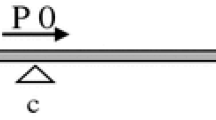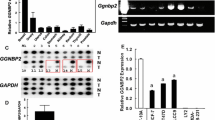Abstract
The Bcl-2 gene is positively regulated by estrogen (E2) primarily through E2-response elements in the coding region and a putative p53 negative regulatory element (NRE) containing a short upstream open reading frame (uORF). The ability of mutant p53 to repress or induce Bcl-2 expression is controversial. In this study E2-receptor positive (ER+)/wild-type p53 MCF-7cells were transfected with p53Δ291, which lacks a nuclear localization signal or a DNA binding domain mutant, p53(173L). Both p53 mutants but especially p53Δ291 increased Bcl-2 protein expression from a CMV-NRE-Bcl-2 cDNA construct in an NRE-position/orientation independent manner as well as from a 1.7 kb Bcl-2 promoter reporter gene. Bcl-2 protein expression prevented the p53Δ291-mediated increase in Bcl-2 promoter activity although immunoprecipitation demonstrated that only a small proportion of the wild-type p53 but not p53Δ91 protein interacts with Bcl-2. Unless levels of ectopically expressed mutant p53 were extremely high, stable expression of mutant p53 in MCF-7 cells moderately increased Bcl-2 protein levels. Expression of mutant p53 did not alter E2 regulation of Bcl-2, however, mutation of the uORF prevented regulation by both mutant p53 and E2. Adenovirus-mediated overexpression of WT p53 strongly reduced Bcl-2 expression in ER−/mut p53 MDA-MB-231 cells. Taken together these data support the position that mutant p53 behaves in a dominant “positive” manner relieving repression by WT p53 or another Bcl-2 transcriptional inhibitor in a manner independent of nuclear translocation.










Similar content being viewed by others
References
Allsopp TE, Wyatt S, Paterson HF, Davies AM (1993) The proto-oncogene Bcl-2 can selectively rescue neurotrophic factor-dependent neurons from apoptosis. Cell 73:295–307
Bissonnette RP, Echeverri F, Mahboubi A, Green DR (1992) Apoptotic cell death induced by c-myc is inhibited by Bcl-2. Nature 359:552–554
Garcia I, Martinou I, Tsujimoto Y, Martinou J-C (1992) Prevention of programmed cell death of sympathetic neurons by the Bcl-2 proto-oncogene. Science 258:302–304
Miyashita T, Reed JC (1992) Bcl-2 gene transfer increases relative resistance of S49.1 and WEHI7.2 lymphoid cells to cell death and DNA fragmentation induced by glucocorticoids and multiple chemotherapeutic drugs. Cancer Res 52:5407–5411
Gross AJ, McDonnell M, Korsmeyer SJ (1999) Bcl-2 family members and the mitochondria in apoptosis. Genes Dev 13:1899–1911
Deveraux QL, Schendel SL, Reed JC (2001) Anti-apoptotic proteins. The Bcl-2 and inhibitor of apoptosis protein families. Cardiol Clin 19:57–74
Ko LJ, Prives C (1996) p53: puzzle and paradigm. Genes Dev 10:1054–1072
Levine AJ (1997) p53, the cellular gatekeeper for growth and division. Cell 88:323–331
White E (1996) Life, death, and the pursuit of apoptosis. Genes Dev 10:1–15
Kokontis JM, Wagner AJ, O’Leary M, Liao S, Hay N (2001) A transcriptional activation function of p53 is dispensible for and inhibitory of its apoptotic function. Oncogene 20:659–668
Haupt Y, Rowan S, Shaulian E, Vousden KH, Oren M (1995) Induction of apoptosis in HeLa cells by transactivation deficient p53. Genes Dev 9:2170–2183
Moll UM, Riou G, Levine AJ (1995) Two distinct mechanisms alter p53 in breast cancer: mutation and nuclear exclusion. Proc Natl Acad Sci USA 92:4407–4411
Fontoura BM, Atienza CA, Sorokina EA, Morimoto T, Carroll RB (1997) Cytoplasmic p53 polypeptide is associated with ribosomes. Mol Cell Biol 17:3146–3154
Clarke R, Skaar T, Baumann K et al (1994) Hormonal carcinogenesis in breast cancer: cellular and molecular studies of malignant progression. Breast Cancer Res Treat 31:237–248
Santen RJ, Manni A, Harvey H, Redmond C (1990) Endocrine treatment of breast cancer in women. Endocr Rev 11:221–65
Teixeira C, Reed JC, Pratt MA (1995) Estrogen promotes chemotherapeutic drug resistance by a mechanism involving Bcl-2 proto-oncogene expression in human breast cancer cells. Cancer Res 55:3902–3907
Leek RD, Kaklamanis L, Pezzella F, Gatter KC, Harris AL (1994) Bcl-2 in normal human breast and carcinoma, association with oestrogen receptor-positive, epidermal growth factor receptor-negative tumours and in situ cancer. Br J Cancer 69:135–139
Bhargava V, Kell DL, van de Rijn M, Warnke RA (1994) Bcl-2 immunoreactivity in breast carcinoma correlates with hormone receptor positivity. Am J Pathol 145:535–540
Young RL, Korsmeyer SJ (1993) A negative regulatory element in the Bcl-2 5′-untranslated region inhibits expression from an upstream promoter. Mol Cell Biol 13:3686–3697
Dong L, Wang W, Wang F et al (1999) Mechanisms of transcriptional activation of Bcl-2 gene expression by 17beta-estradiol in breast cancer cells. J Biol Chem 274:32099–32107
Perillo B, Sasso A, Abbondanza C, Palumbo G (2000) 17beta-estradiol inhibits apoptosis in MCF-7 cells, inducing Bcl-2 expression via two estrogen-responsive elements present in the coding sequence. Mol Cell Biol 20:2890–2901
Haldar S, Negrini M, Monne M, Sabbioni S, Croce CM (1994) Down-regulation of Bcl-2 by p53 in breast cancer cells. Cancer Res 54:2095–2097
Miyashita T, Harigai M, Hanada M, Reed JC (1994) Identification of a p53-dependent negative response element in the Bcl-2 gene. Cancer Res 54:3131–3135
Harigai M, Miyashita T, Hanada M, Reed JC (1996) A cis-acting element in the BCL-2 gene controls expression through translational mechanisms. Oncogene 12:1369–1374
Crook T, Vousden KH (1992) Properties of p53 mutations detected in primary and secondary cervical cancers suggest mechanisms of metastasis and involvement of environmental carcinogens. EMBO J 1:3935–3940
Marston N J, Crook T, Vousden KH (1994) Interaction of p53 with MDM2 is independent of E6 and does not mediate wild type transformation suppressor function. Oncogene 9:2707–2716
Concin N, Zeillinger C, Tong D et al (2003) Comparison of p53 mutational status with mRNA and protein expression in a panel of 24 breast carcinoma cell lines. Breast Can Res Treat 79:37–46
Pratt MA, Krajewski S, Menard M, Krajewska M, Macleod H, Reed JC (1998) Estrogen withdrawal-induced human breast cancer tumour regression in nude mice is prevented by Bcl-2. FEBS Lett 440:403–408
Shen Y, Shenk T (1994) Relief of p53-mediated transcriptional repression by the adenovirus E1B 19 kDa protein or the cellular Bcl-2 protein. Proc Natl Acad Sci USA 91:8940–8944
Mihara M, Erster S, Zaika A et al (2003) p53 has a direct apoptogenic role at the mitochondria. Mol Cell 11:577–590
O’Connor PM, Jackman J, Bae I et al (1997) Characterization of the p53 tumor suppressor pathway in cell lines of the National Cancer Institute anticancer drug screen and correlations with the growth-inhibitory potency of 123 anticancer agents. Cancer Res 57:4285–4300
Wu Y-I, Mehew JW, Heckman CA, Arcinas M, Boxer LM (2001) Negative regulation of Bcl-2 expression by p53 in hematopoietic cells. Oncogene 20:240–251
Miyashita T, Krajewski S, Krajewska M et al (1994) Tumor suppressor p53 is a regulator of Bcl-2 and bax gene expression in vitro and in vivo. Oncogene 9:1799–1805
Ameyar M, Shatrov V, Bouquet C et al (1999) Adenovirus-mediated transfer of wild-type p53 gene sensitizes TNF resistant MCF-7 derivatives to the cytotoxic effect of this cytokine: relationship with c-myc and Rb. Oncogene 18:5464–5472
Trisciuoglio D, Iervolino A, Candiloro A et al (2004) Bcl-2 induction of urokinase plasminogen activator receptor expression in human cancer cells through Sp1 activation: involvement of ERK1/ERK2 activity. J Biol Chem 279:6737–6745
Wang Z, Zhang B, Wang M, Carr BI (2003) Persistent ERK phosphorylation negatively regulates cAMP response element-binding protein (CREB) activity via recruitment of CREB-binding protein to ppRSK. J Biol Chem 278:11138–11145
Ioakim-Liossi A, Karakitsos P, Markopoulos C et al (2001) p53 protein expression and oestrogen and progesterone receptor status in invasive ductal breast carcinomas. Cytopathology 2:197–202
Dong L, Wang W, Wang F et al (1999) Mechanisms of transcriptional activation of Bcl-2 gene expression by 17beta-estradiol in breast cancer cells. J Biol Chem 274:32099–32107
Author information
Authors and Affiliations
Corresponding author
Additional information
Supported by a grant from the National Cancer Institute of Canada/Canadian Institutes of Health Research Breast Cancer Initiative to M. A. C. P.
Rights and permissions
About this article
Cite this article
Pratt, M.A.C., White, D., Kushwaha, N. et al. Cytoplasmic mutant p53 increases Bcl-2 expression in estrogen receptor-positive breast cancer cells. Apoptosis 12, 657–669 (2007). https://doi.org/10.1007/s10495-006-0023-y
Published:
Issue Date:
DOI: https://doi.org/10.1007/s10495-006-0023-y




